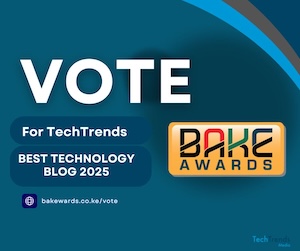
Despite Kenya’s impressive smartphone penetration now exceeding 100% many rural communities still grapple with unreliable broadband and limited access to essential digital services. In this context, affordable and app-centric home printing solutions could serve as a critical bridge between always-connected mobile users and the realities of offline life in underserved regions.
In this interview, Mukesh Bector, Regional Head for East and West Africa at Epson, shares how the company is reimagining home and school printing through innovation, accessibility, and strategic partnerships. From ink-saving EcoTank printers and mobile-first apps to rural deployment models in partnership with Liquid Intelligent Technologies and county governments, Epson is positioning itself as a key player in narrowing the digital divide one printed page at a time.
Mukesh explores how the company’s Smart Panel app and Wi-Fi Direct-enabled printers are transforming smartphones into full-service productivity tools, even in areas without internet access. He also outlines the design, pricing, and service strategies that are making digital inclusion a sustainable reality in Kenya and beyond.
Kenya’s smartphone penetration has surpassed 100%, yet reliable broadband still lags in many rural counties. How does your organization envision affordable, app-centric home printers acting as a “missing link” between always-connected smartphones and low-connectivity communities? What metrics will you watch to prove real progress on digital inclusion?
At Epson, we see smartphones as a powerful gateway to digital access but without affordable, app-enabled printing solutions, the benefits of connectivity remain limited in underserved communities. Our Epson Smart Panel app bridges this gap, transforming smartphones into full-service print hubs even in areas with unreliable broadband.
Key features include:
- PC-free printer setup
- Direct mobile printing, scanning, and copying
- Access to cloud storage and remote support where available
When internet is limited or unavailable, offline functionality ensures key printing operations like document reproduction or schoolwork remain accessible via Wi-Fi Direct.
Our EcoTank printers are designed for affordability, with ultra-low-cost ink refills and minimal maintenance needs, making them ideal for households, students, and small businesses in low-connectivity regions. These models are also tailored for local power conditions and usage habits.
To track progress, we focus on metrics such as: Feedback from community partners and schools on usage impact
What design or pricing innovations (e.g., ink-tank models, micro-financing, pay-per-page apps) are you prioritizing to keep the total cost of ownership low enough for rural households and schools while still sustaining healthy margins for the business?
We’ve placed affordability and sustainability at the core of our product innovation. Our EcoTank printers use high-capacity refillable ink tanks, reducing the cost per page by up to 90% compared to traditional cartridge models. This makes printing economically viable for rural schools and households with regular usage needs.
From a business perspective, Epson maintains healthy margins through the long-term sale of ink bottles and a strong focus on customer retention and repeat usage. Additionally, we are exploring partnerships to enable micro-financing and bulk distribution programs to increase reach while supporting sustainable unit economics.
In areas where data is scarce, how are you leveraging smartphone apps and Bluetooth or Wi-Fi Direct-enabled printers to deliver critical content such as government forms, health leaflets, or school materials without requiring continuous internet access?
Epson’s mobile-first approach is purpose-built for data-scarce environments. Our Epson iPrint and Epson Smart Panel apps enable users to print directly from smartphones without needing a constant internet connection.
We achieve this through:
- Wi-Fi Direct: Allows a smartphone to connect directly to the printer, without routers and internet altogether.
- Offline access: Enables users to print pre-downloaded forms, school assignments, or health documents directly from their mobile device.
This functionality is especially critical for last-mile service delivery in rural settings, where digital content distribution depends on minimal data use and reliable offline tools.
Which partnerships (telcos, county governments, ed-tech platforms, SACCOs) are proving most effective at seeding printers in rural hubs, and how do you ensure that training, servicing, and consumable supply chains keep pace with installed units?
Strategic partnerships are central to Epson’s rural deployment model. In Kenya, we’ve partnered with Liquid Intelligent Technologies, a leading digital infrastructure provider, to deploy printers in remote learning hubs. This initiative has already benefited over 30,000 learners by improving access to digital educational content.
To support scale and sustainability:
We leverage our Epson Partner Program to work with trained local resellers and service providers. These partners offer installation, maintenance, and on-site training, ensuring localized, hands-on support.
Our EcoTank models are designed to minimize consumable needs through refillable tanks, reducing the cost and frequency of replacement—crucial for remote areas with limited resupply options.
We continue to explore partnerships with county governments, SACCOs, and ed-tech platforms to drive localized adoption, bundled education content, and community-led training.
Together, these efforts help us scale responsibly while making real strides in bridging the digital divide.
Mark your calendars! TechTrends Pulse lands in Nairobi this August! Join top tech leaders, innovators & AI experts for a half-day of keynotes, showcases & sharp insights on business transformation. RSVP now -limited slots available! Register here.
Follow us on WhatsApp, Telegram, Twitter, and Facebook, or subscribe to our weekly newsletter to ensure you don’t miss out on any future updates. Send tips to editorial@techtrendsmedia.co.ke





